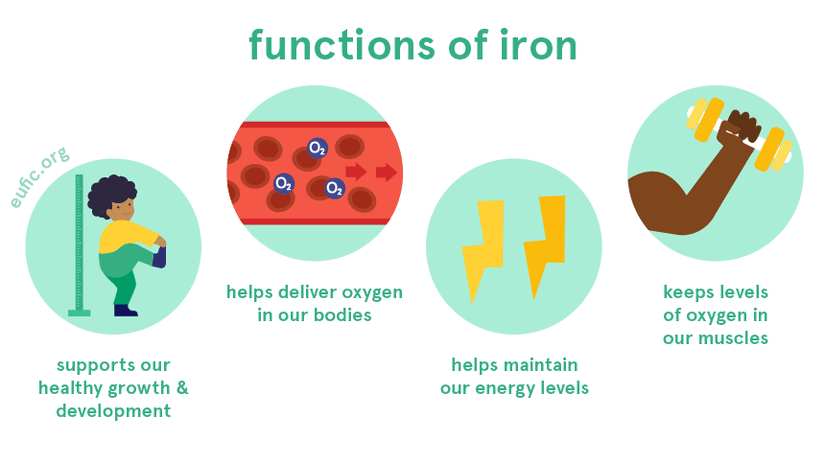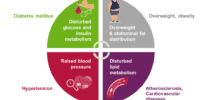The Role Of Iron In The Blood: Essential Nutrient For Health

Iron is an essential nutrient that plays a critical role in the human body. It is a component of hemoglobin, a protein found in red blood cells that is responsible for transporting oxygen from the lungs to the tissues and organs throughout the body.
Iron is also involved in a number of other important bodily functions, including immune system function, energy production, and DNA synthesis.
Despite its importance, iron deficiency remains a common nutritional problem worldwide. In fact, the World Health Organization estimates that approximately 30% of the global population is affected by iron deficiency anemia, a condition in which the body does not have enough iron to produce adequate amounts of hemoglobin.
This article will explore the functions of iron in the body, the symptoms and causes of iron deficiency, recommended daily intakes of iron, dietary sources of iron, factors affecting iron absorption, types and dosages of iron supplements, risks and side effects of iron overdose, and the relationship between iron and various health conditions.
Key Takeaways
- Iron is an essential nutrient that plays a critical role in the human body, including immune system function, energy production, and DNA synthesis.
- Iron deficiency remains a common nutritional problem worldwide, with approximately 30% of the global population affected by iron deficiency anemia.
- Adequate intake of iron is essential for the body to produce functional red blood cells and maintain overall health, and a balanced diet that includes sources of iron can help ensure adequate intake.
- Excessive intake of iron supplements can lead to serious health risks and side effects, and recommended doses should be followed with medical attention sought if symptoms of iron overdose are experienced.
The Functions of Hemoglobin in the Body
Hemoglobin, a protein found in red blood cells, plays a crucial role in transporting oxygen from the lungs to tissues throughout the body. It is made up of four protein chains, each containing a heme group that binds to oxygen.
When oxygen is inhaled, it binds to the heme groups in the lungs, and is then transported by the hemoglobin in the blood to the rest of the body. This process is essential for maintaining the health of cells and tissues, as oxygen is required for cellular respiration, the process by which cells generate energy.
Aside from its role in oxygen transport, hemoglobin also plays a key role in regulating the pH of the blood. As carbon dioxide is produced by cellular respiration, it is transported by the blood to the lungs and exhaled. However, some of the carbon dioxide reacts with water in the blood to form carbonic acid, which can lower the pH of the blood.
Hemoglobin helps to buffer this effect by binding with excess hydrogen ions, which are released when carbonic acid dissociates. This helps to maintain the pH of the blood within a narrow, healthy range.
Symptoms and Causes of Iron Deficiency
One possible sentence that meets the criteria is: A deficiency in iron can lead to a range of symptoms, including fatigue, weakness, pale skin, and shortness of breath. Iron is an essential nutrient for the body, as it plays a crucial role in the formation of hemoglobin, which is responsible for transporting oxygen from the lungs to the various tissues and organs in the body. When there is a deficiency in iron, the body is not able to produce enough hemoglobin, which can result in a condition known as anemia.
Symptoms of iron deficiency can vary depending on the severity of the deficiency. In mild cases, there may be no symptoms, while more severe cases can lead to fatigue and weakness, shortness of breath, and pale skin. Other symptoms may include headaches, dizziness, and cold hands and feet. If left untreated, iron deficiency can lead to complications such as heart problems, delayed growth and development in children, and complications during pregnancy. It is important to ensure that the body is getting enough iron through a balanced diet or supplements to prevent iron deficiency and its associated symptoms.
| Symptoms of Iron Deficiency | Causes of Iron Deficiency | |||
|---|---|---|---|---|
| Fatigue | Inadequate iron intake | |||
| Weakness | Blood loss due to injury or menstruation | |||
| Pale skin | Pregnancy or breastfeeding | |||
| Shortness of breath | Digestive disorders that affect iron absorption | Headaches | Chronic kidney disease or dialysis treatment |
Recommended Daily Intake of Iron
The daily recommended intake of iron varies depending on age, gender, and other factors, and can be obtained through a balanced diet or supplements. Adequate intake of iron is essential for the body to produce functional red blood cells and maintain overall health.
Here are some recommended daily intakes of iron based on age and sex:
- Infants (0-6 months): 0.27 milligrams/day
- Children (7-12 months): 11 milligrams/day
- Adult men: 8 milligrams/day
- Adult women: 18 milligrams/day
It is important to note that women who are pregnant or breastfeeding may require higher amounts of iron. Vegetarians and vegans may also need to consume more iron as plant-based sources are not as easily absorbed by the body as animal-based sources. It is recommended to speak with a healthcare professional to determine individual iron needs and ensure proper intake.
Iron deficiency can lead to serious health problems, such as anemia, which can result in fatigue, weakness, and shortness of breath. On the other hand, excessive intake of iron can also lead to health problems. Therefore, it is important to consume the recommended daily intake of iron and to not exceed the upper limit of intake set by regulatory agencies.
A balanced diet that includes sources of iron, such as red meat, poultry, fish, beans, lentils, and fortified cereals, can help ensure adequate iron intake.
Dietary Sources of Iron
Dietary sources that are rich in iron include red meat, poultry, fish, beans, lentils, and fortified cereals. Red meat, such as beef, pork, and lamb, is particularly high in heme iron, which is easily absorbed by the body. Poultry and fish also contain heme iron, but in slightly lower amounts than red meat.
Non-heme iron, which is found in plant-based sources, is not as easily absorbed as heme iron. However, consuming non-heme iron-rich foods with a source of vitamin C, such as citrus fruits or bell peppers, can enhance absorption.
Vegetarian and vegan sources of iron include tofu, tempeh, nuts, seeds, dark leafy greens, and whole grains. These sources may not contain as much iron as animal-based sources, but they can still contribute to daily iron intake. It is important for individuals who do not consume animal products to pay attention to their iron intake and consider taking iron supplements if necessary.
Overall, a varied diet that includes a mix of heme and non-heme iron sources can help ensure adequate intake of this essential nutrient.
Factors Affecting Iron Absorption
Factors such as the presence of phytates, calcium, and polyphenols in food can inhibit the absorption of iron in the body. Phytates are compounds found in plant-based foods such as legumes and whole grains. They bind to iron, forming a complex that the body cannot absorb.
Calcium, often found in dairy products, can also interfere with iron absorption by competing for the same transporters in the intestinal wall. Polyphenols, which are antioxidants found in tea, coffee, and many fruits and vegetables, can also inhibit iron absorption by forming complexes with the mineral.
However, there are also factors that can enhance iron absorption. For example, consuming vitamin C-rich foods with iron-rich foods can increase the absorption of iron. This is because vitamin C can reduce iron from its non-heme form (found in plant-based foods) to its more easily absorbed heme form (found in animal products).
Additionally, meat, poultry, and fish all contain a factor called the ‘meat factor’that can enhance iron absorption. The meat factor is thought to enhance the ability of the body to absorb non-heme iron from other foods consumed at the same time.
Overall, understanding the factors that affect iron absorption can help individuals make informed dietary choices to ensure adequate iron intake for optimal health.
Iron Supplements: Types and Dosages
Understanding the different types and dosages of iron supplements is crucial for individuals who may need to increase their iron intake.
Iron supplements are available in various forms, including ferrous sulfate, ferrous fumarate, and ferrous gluconate.
Ferrous sulfate is the most commonly prescribed form and is available in tablet, capsule, and liquid form.
Ferrous fumarate is usually prescribed for people who cannot tolerate ferrous sulfate due to gastrointestinal side effects.
On the other hand, ferrous gluconate is less commonly prescribed but is a suitable alternative for people who have difficulty tolerating ferrous sulfate or ferrous fumarate.
Iron supplements are available over-the-counter and in prescription form.
The dosage of iron supplements is dependent on the individual’s iron needs, which can be determined by a healthcare provider.
It is important to follow the recommended dosage and not exceed it, as excessive iron intake can be toxic.
Iron supplements are usually taken with food to enhance absorption and reduce gastrointestinal side effects.
However, it is essential to avoid taking iron supplements with foods or beverages that inhibit iron absorption, such as coffee, tea, and dairy products.
In conclusion, understanding the different types and dosages of iron supplements is crucial for individuals who may need to increase their iron intake, and it is recommended to consult a healthcare provider before taking iron supplements.
Risks and Side Effects of Iron Overdose
Excessive intake of iron supplements can lead to serious health risks and side effects. While iron is an essential nutrient for the body, too much of it can cause harm.
One of the most common side effects of iron overdose is gastrointestinal distress. This can include symptoms such as nausea, vomiting, abdominal pain, and diarrhea. These symptoms can be mild or severe, depending on the amount of iron consumed. In severe cases, iron overdose can cause damage to the lining of the digestive tract, leading to internal bleeding and potentially life-threatening complications.
In addition to gastrointestinal distress, iron overdose can also affect other parts of the body. High levels of iron can cause oxidative stress, which damages cells and tissues. This can lead to a range of health problems, including liver damage, heart disease, and diabetes.
Iron overdose can also interfere with the absorption of other nutrients, such as zinc and copper, which are important for overall health. Therefore, it is important to follow recommended doses of iron supplements and to seek medical attention if you experience any symptoms of iron overdose.
Iron and Health Conditions: Diabetes, Pregnancy, and Cancer
The impact of iron on various health conditions, such as diabetes, pregnancy, and cancer, has been extensively studied and continues to be an area of research.
Iron plays a crucial role in the development of diabetes, as it is involved in the metabolism of glucose and insulin. A deficiency of iron can lead to insulin resistance and impaired glucose tolerance, which are both risk factors for diabetes. However, excessive iron intake can also be detrimental to diabetic patients, as it can lead to oxidative stress and further complications.
Iron is also critical during pregnancy, as it is required for the development of the fetus and placenta. Pregnant women require a higher intake of iron to support the increased blood volume and red blood cell production. Iron deficiency during pregnancy can lead to anemia, preterm birth, low birth weight, and other complications. However, excessive iron intake during pregnancy can also be harmful and has been linked to an increased risk of gestational diabetes and preeclampsia. Therefore, it is essential for pregnant women to maintain a balanced and adequate intake of iron.
In regards to cancer, the role of iron is complex and still being studied. Iron is essential for the growth and proliferation of cancer cells, and high levels of iron have been found in various types of cancer. However, iron also plays a role in the body’s immune response to cancer, as it is involved in the production of reactive oxygen species that can damage cancer cells. Therefore, the relationship between iron and cancer is still unclear, and further research is needed to determine the optimal levels of iron intake for cancer prevention and treatment.
Conclusion
In conclusion, iron plays a vital role in the human body, especially in the formation of hemoglobin, which is essential for transporting oxygen to different organs.
Iron deficiency can lead to various health issues, such as anemia and fatigue.
The recommended daily intake of iron varies by age, gender, and health status, and it can be obtained from both animal and plant sources.
However, factors such as the presence of inhibitors or enhancers can affect the absorption of iron in the body.
Iron supplements can be an effective way to treat iron deficiency, but it is important to follow the recommended dosage and be aware of the potential risks and side effects of overdose.
Moreover, iron status can affect the risk and management of various health conditions, such as diabetes, pregnancy, and cancer.
Therefore, it is essential to maintain adequate iron levels in the body to support overall health and wellbeing.
Further research is necessary to explore the relationship between iron and health outcomes and to develop effective strategies for preventing and treating iron deficiency.









